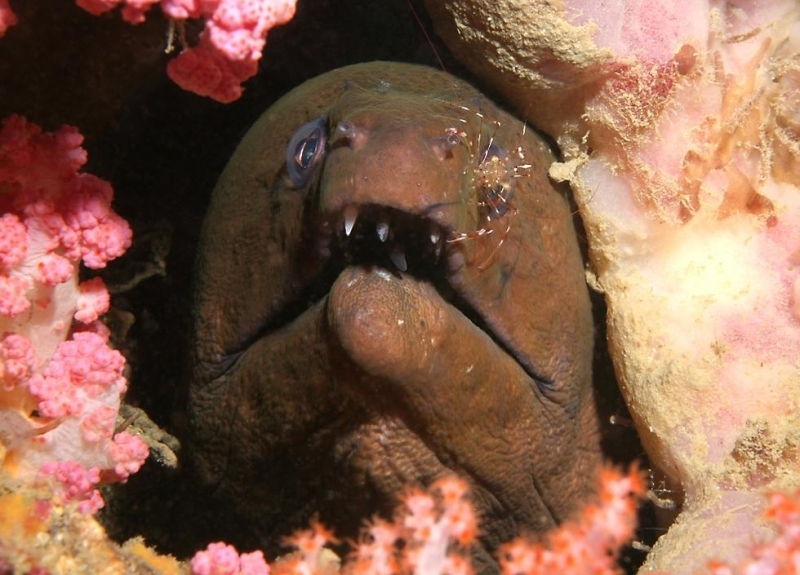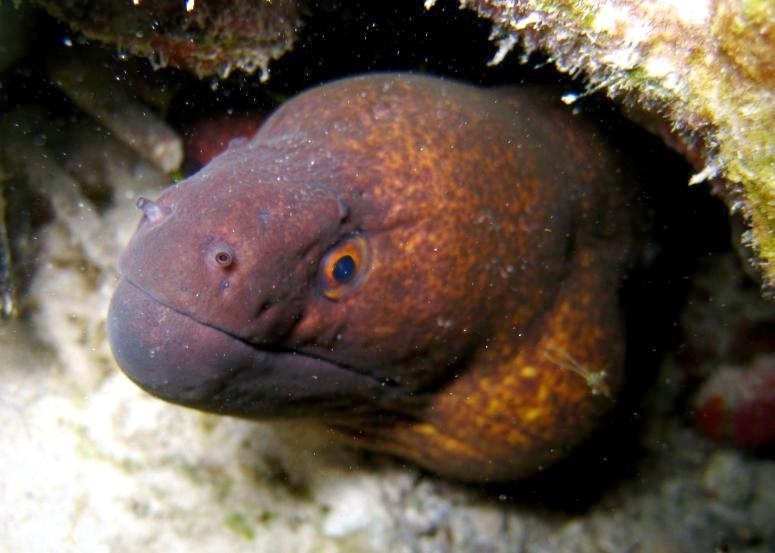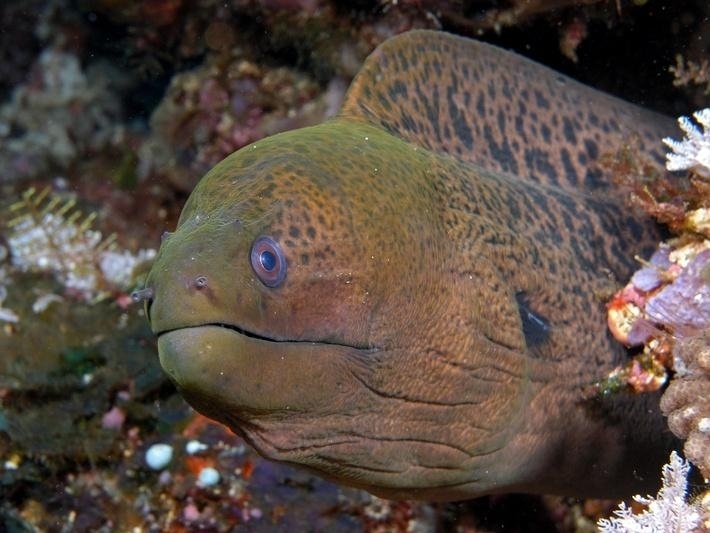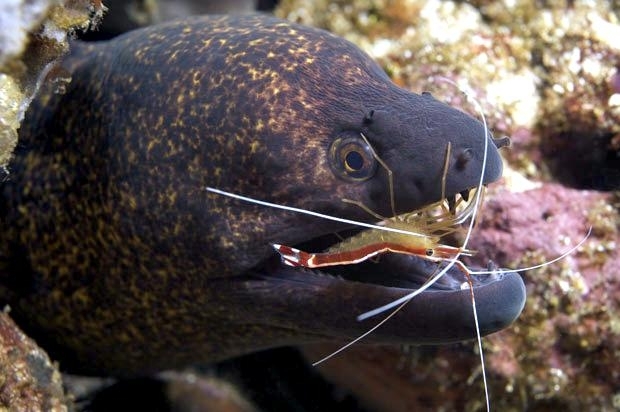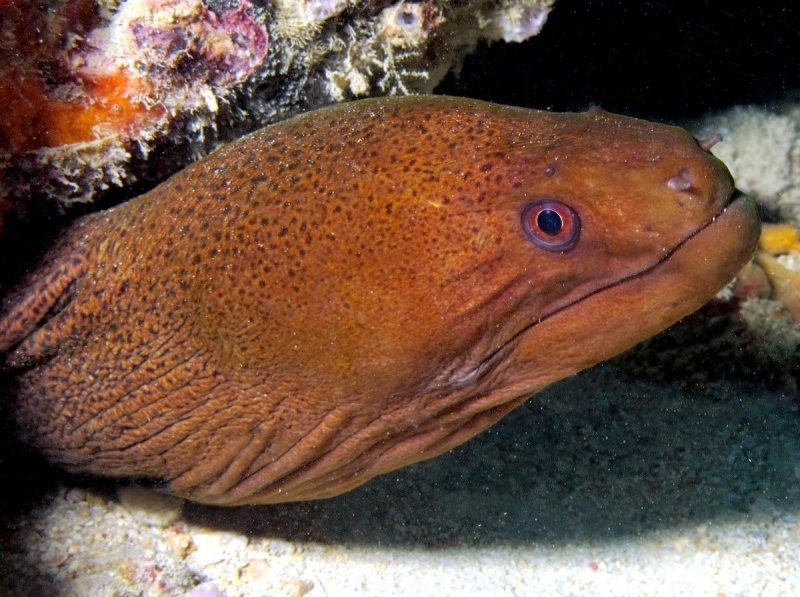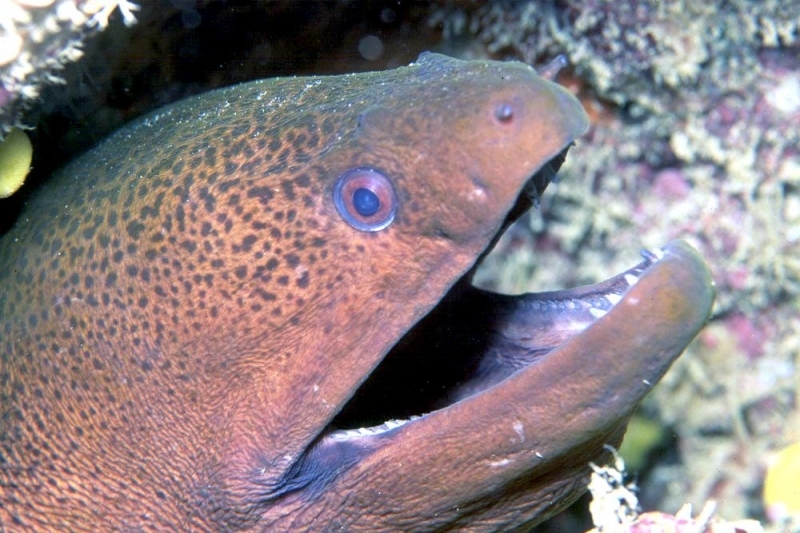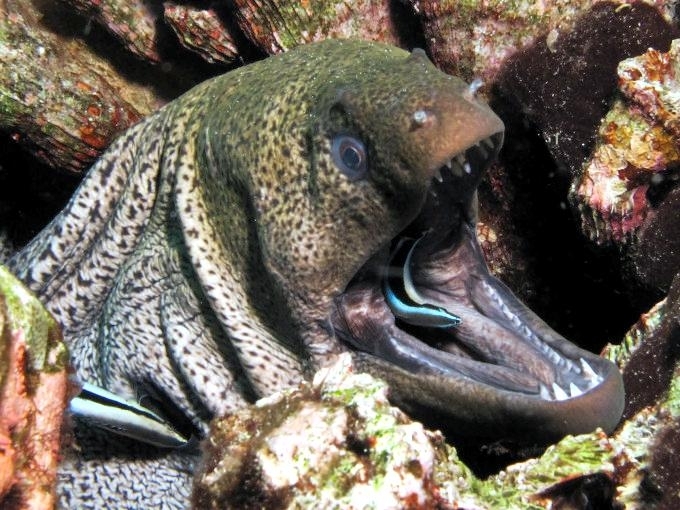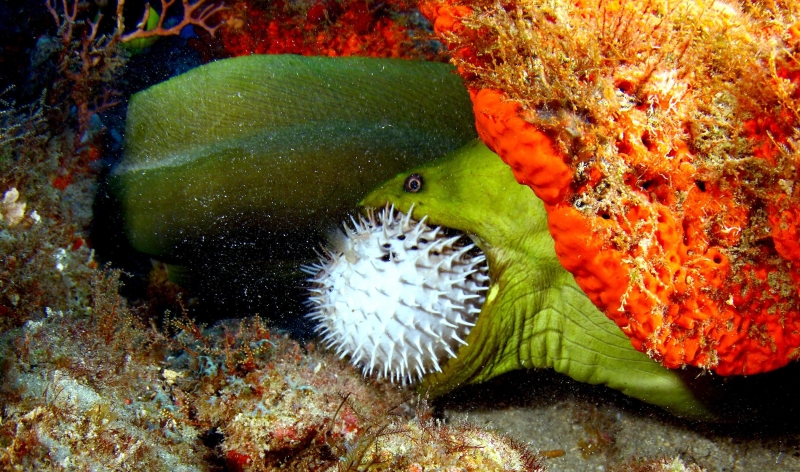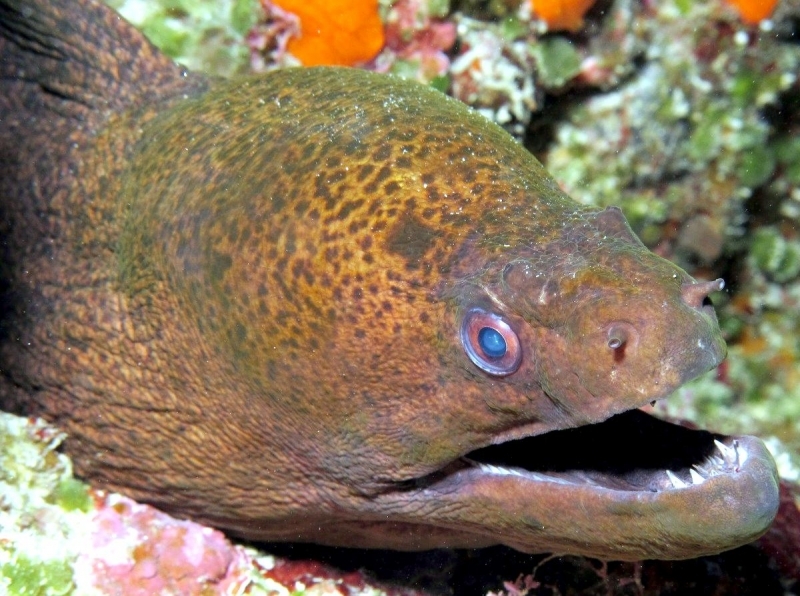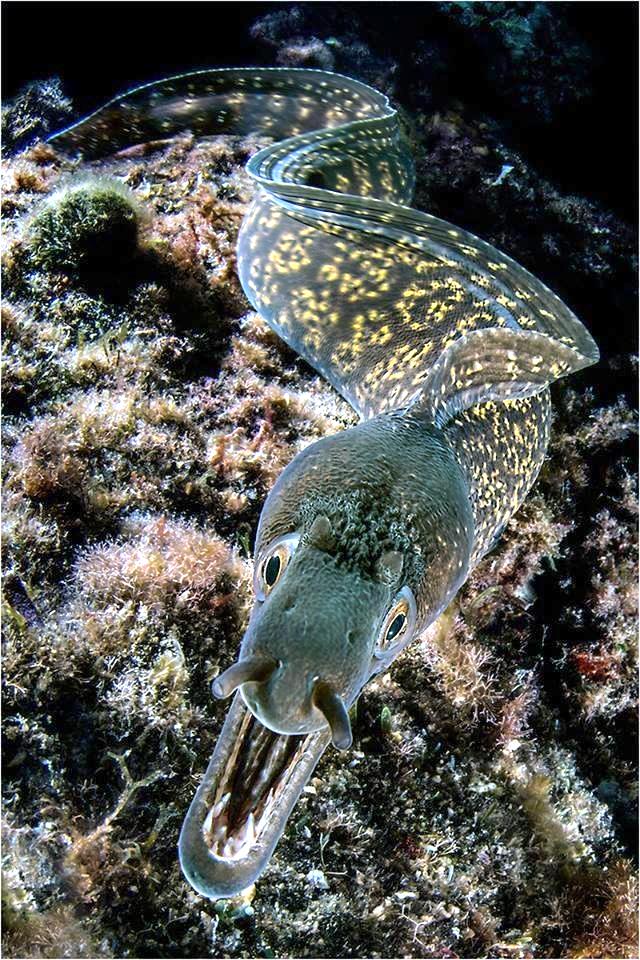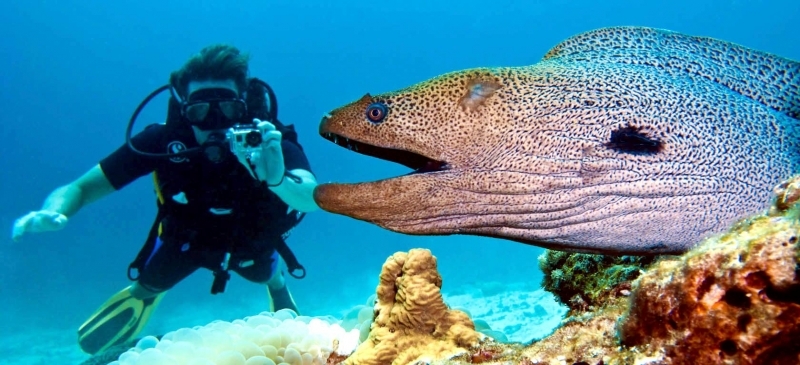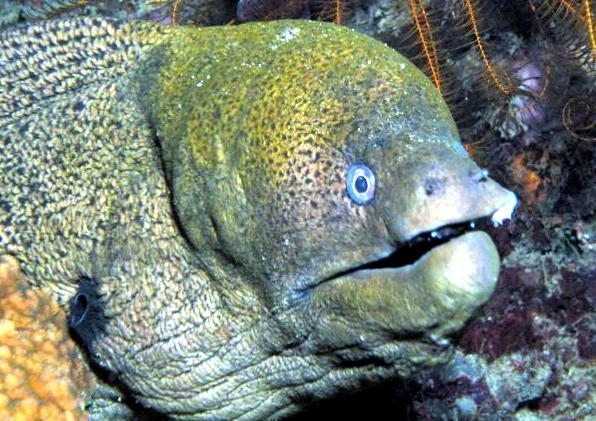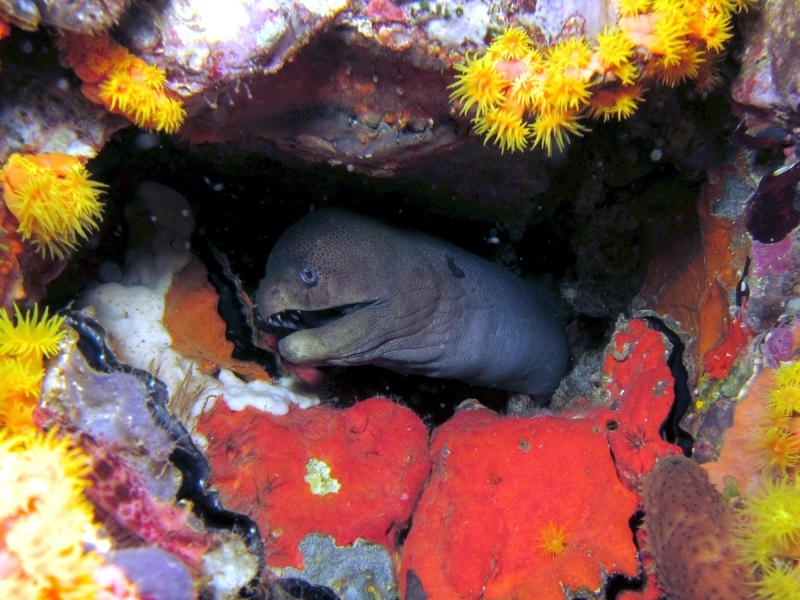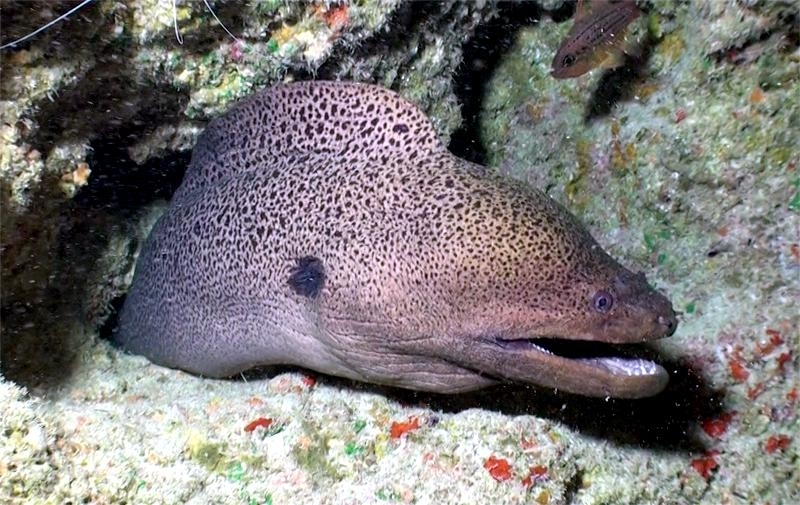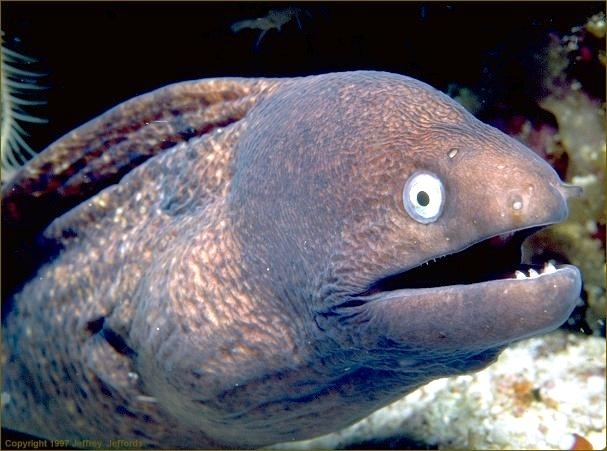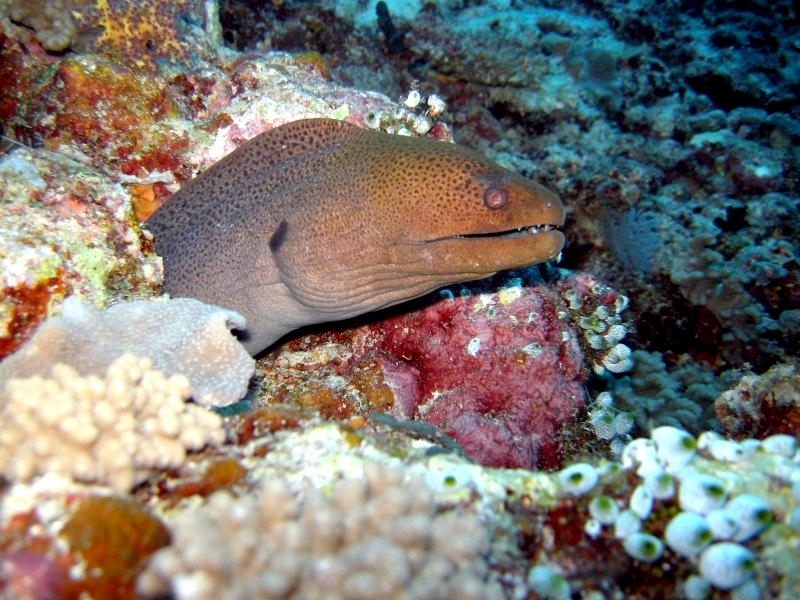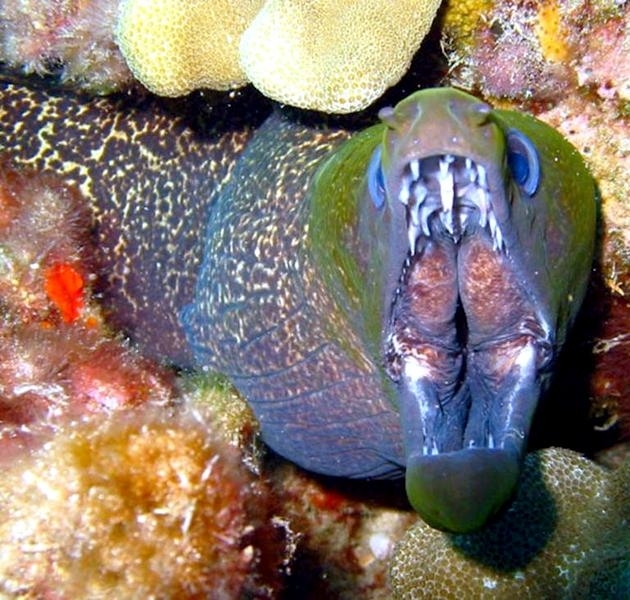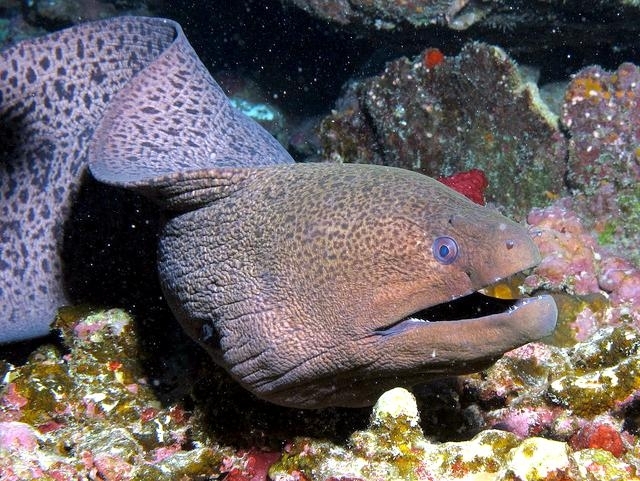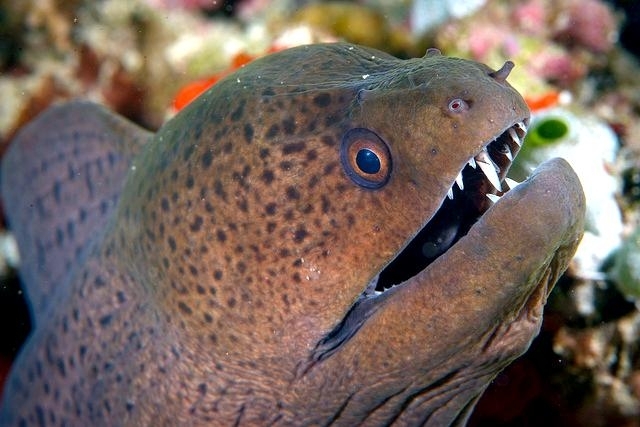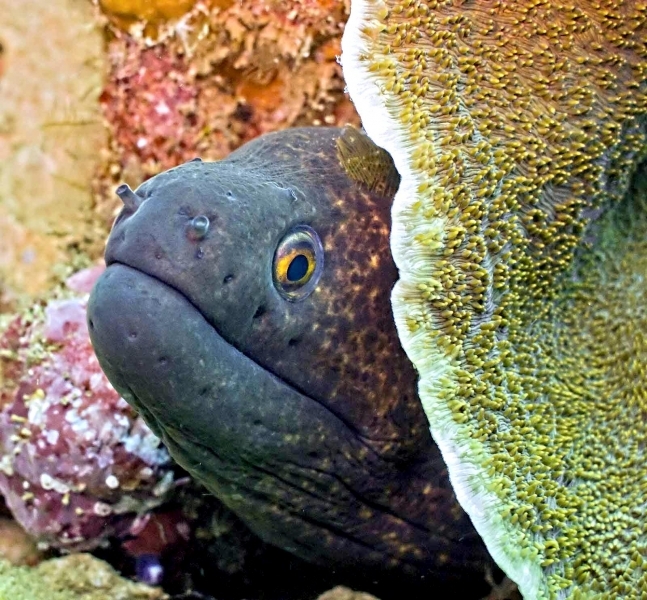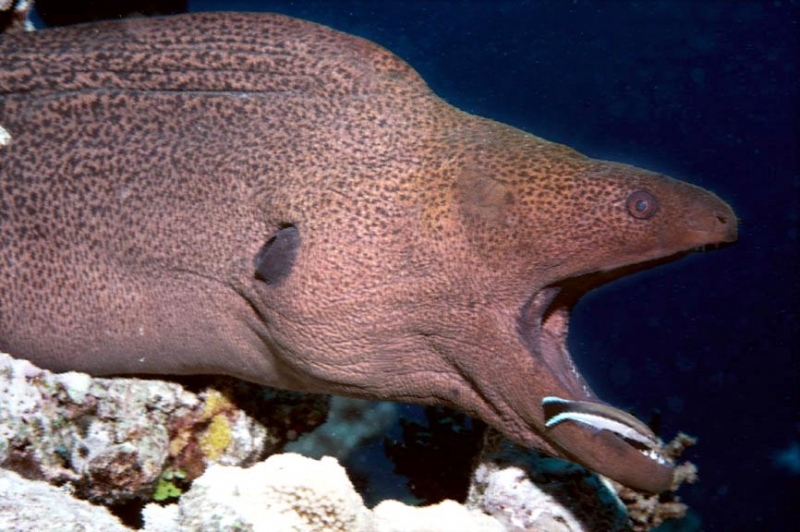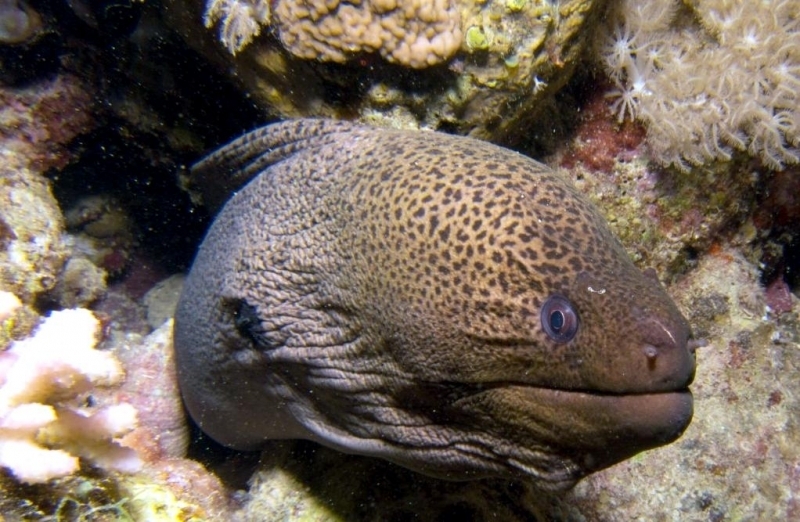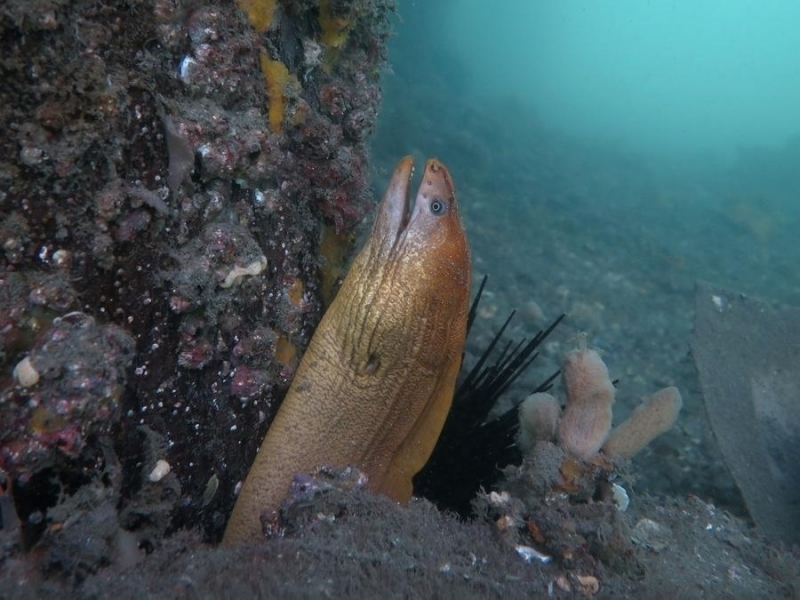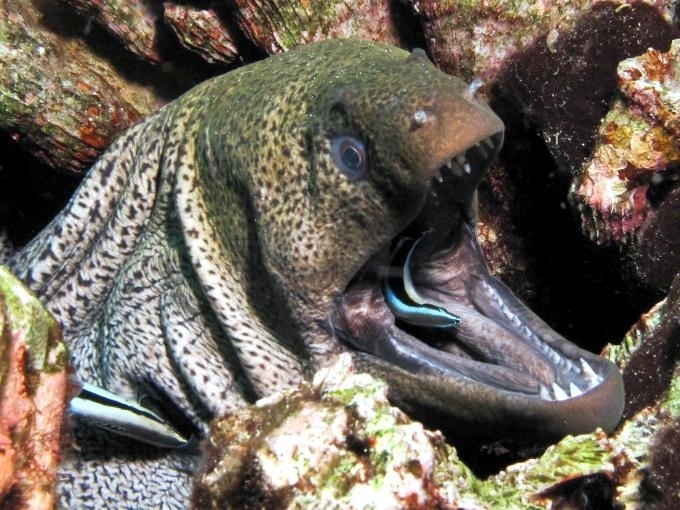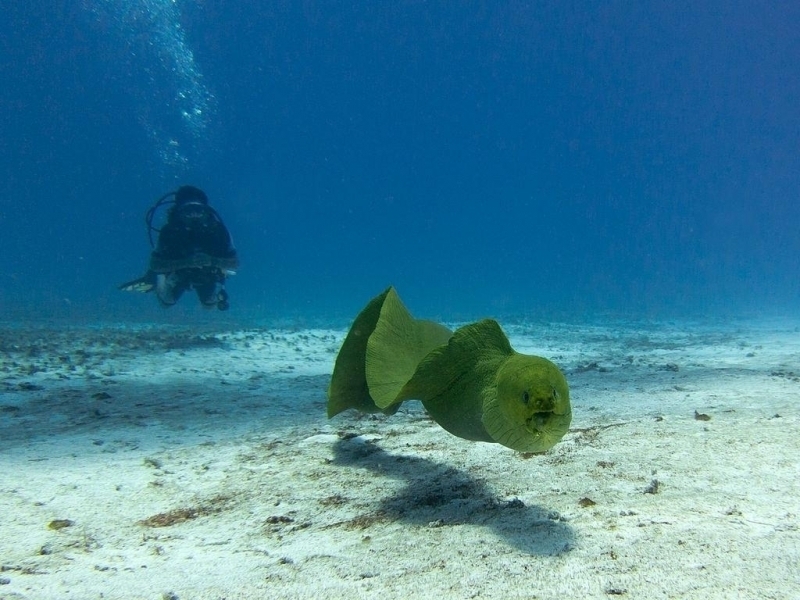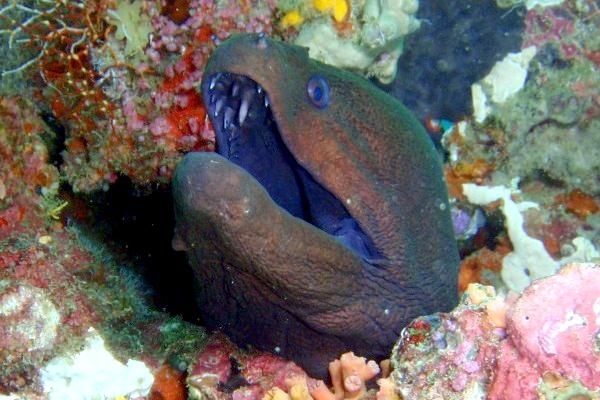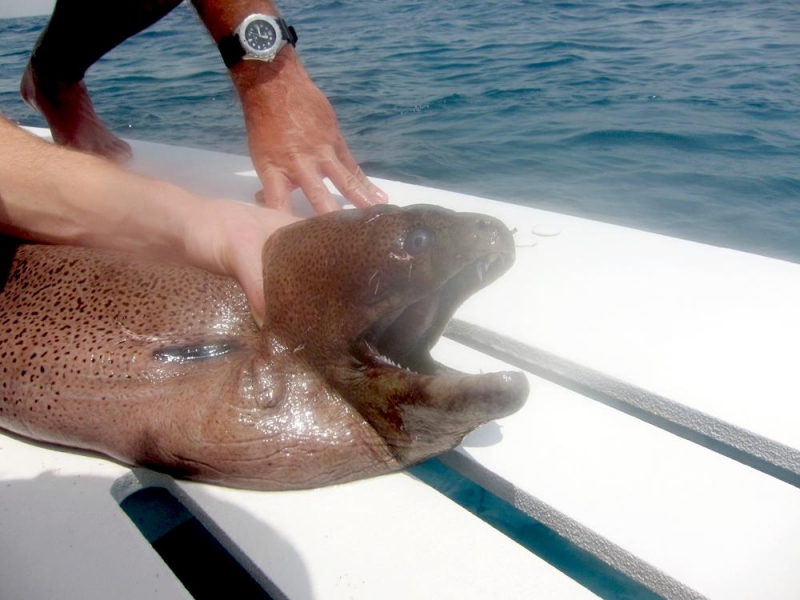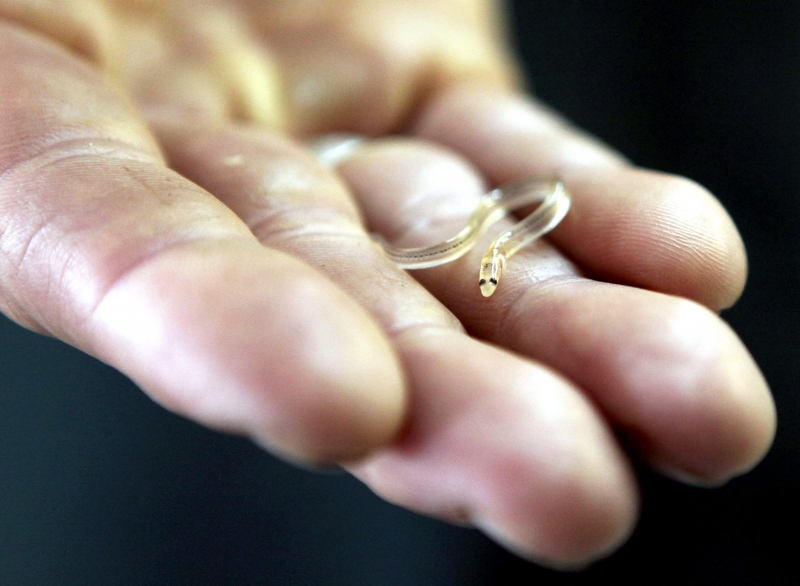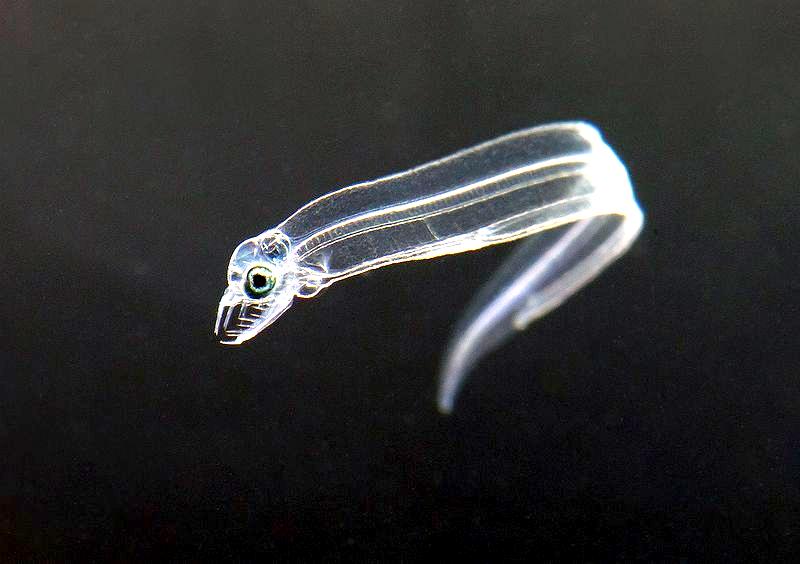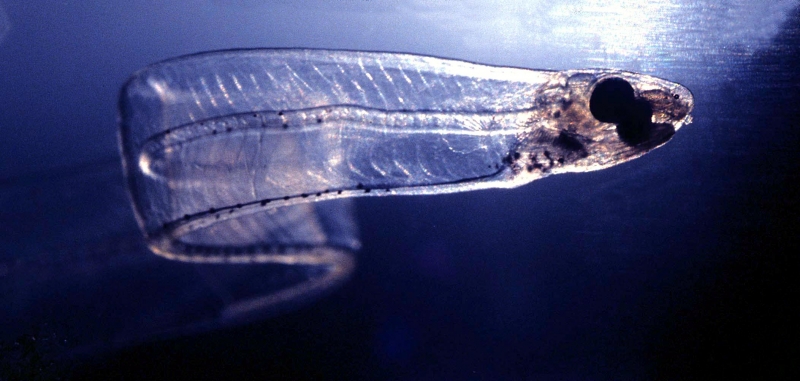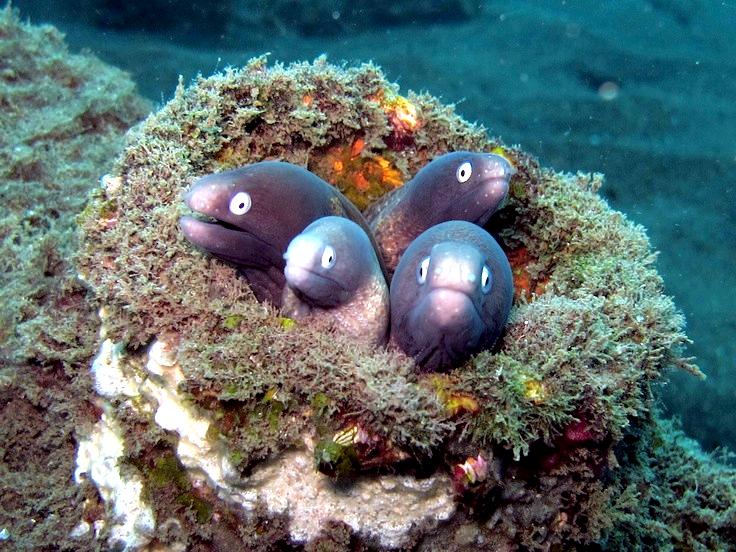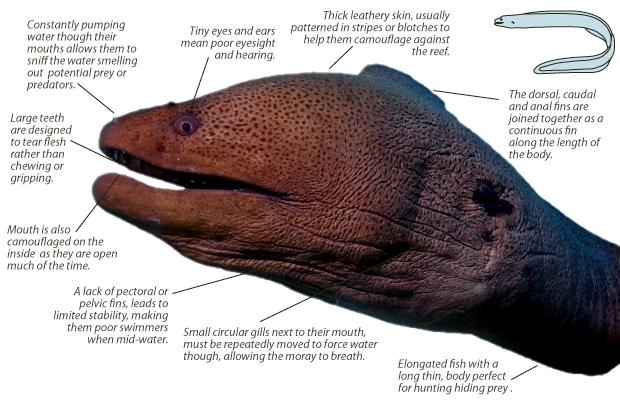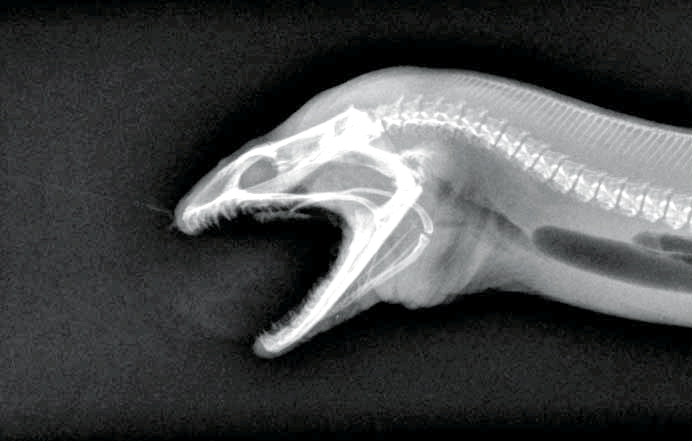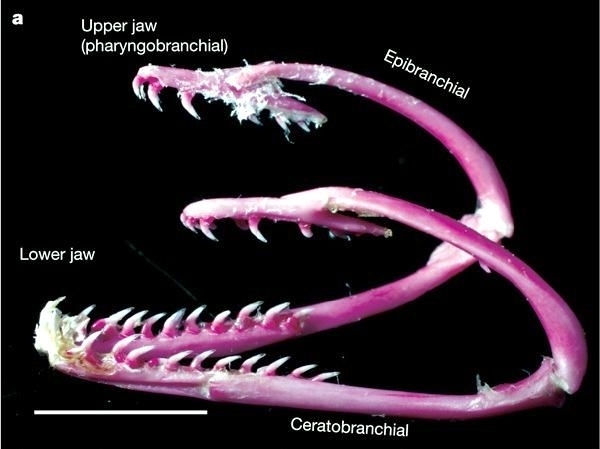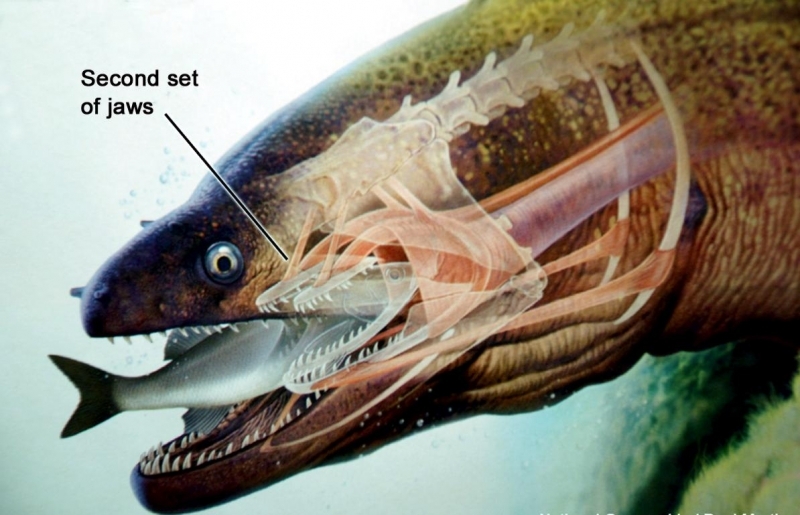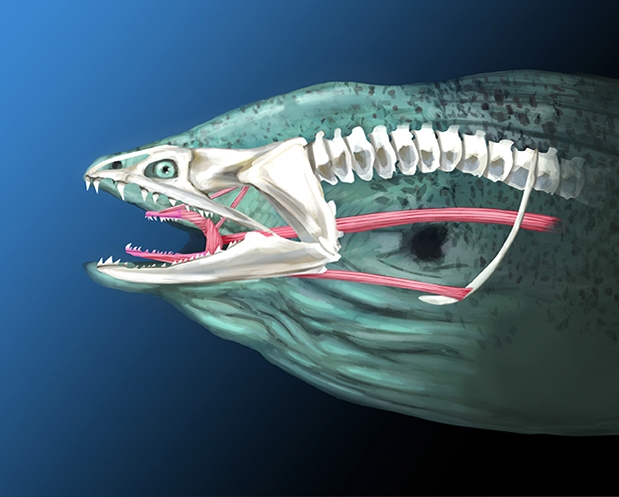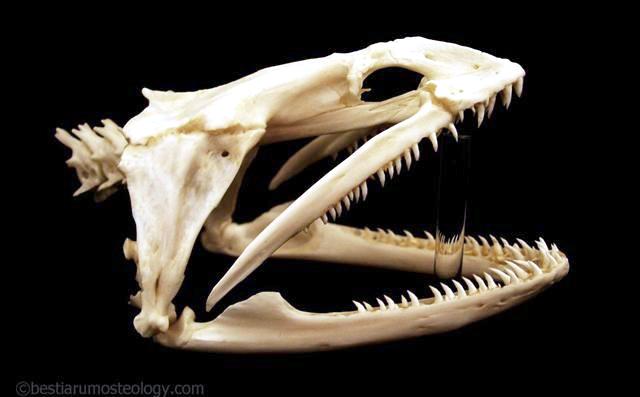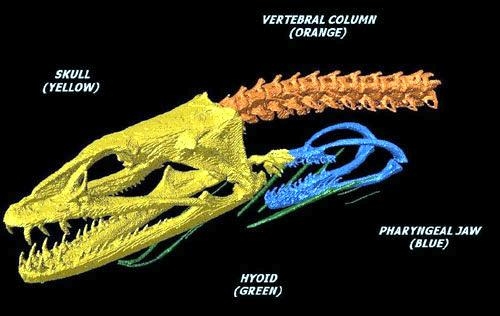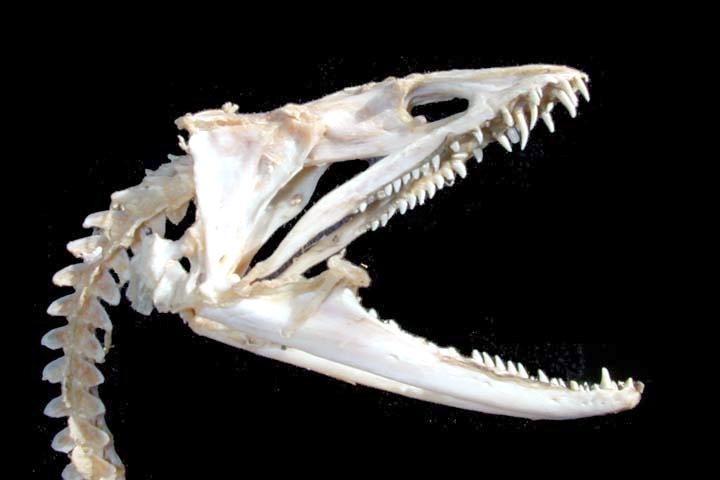“Gymnothorax funebris”
Giant Moray Eels are one of the most common and the largest of the moray eels. They were used to delight the guests of a Roman Licinius Muraena from whom they derive their name, who reared the Giant Moray Eels for exhibition. These eels average 1.8 meters in length, but can grow up to 2.5 meters long and weigh up to 29 kilograms. The dark green to brown color comes from a yellowish mucous that covers its blue skin to provide protection from parasites and infectious bacteria. Additionally, they are often camouflaged to hide in the reef from unsuspecting prey. Camouflage often extend into the mouth of the Giant Moray which continually opens and closes slowly to move water over the gills for respiration. The large mouth features strong, pointed sharp teeth. The body is muscular with a long dorsal fin that extends down the length of the body starting from the head and ending in a short tail fin. Giant Moray Eels are found in the Western Atlantic, Bermuda and northern Gulf of Mexico to Brazil. A bottom dwelling and solitary species found along rocky shorelines, reefs and mangroves. Depth ranges from 1-30 meters. These eels can be territorial and have been known to occupy a specific reef for many years.
Giant Moray Eels are nocturnal predators with poor eyesight that primarily use their sense of smell to hunt for fish, squid, octopuses, crabs and occasionally other eels. Giant Morays have been observed eating octopuses whole as well as tentacle by tentacle. Giant Moray Eels like all true eels, are oviparous. Although little is known regarding Giant Moray Eel spawning, fecundity and early development of the leptocephali, one published source records numerous ripe eggs measuring 1 millimeter in diameter from a 1.1 meter female. In contrast to this single record, other sources indicate a much larger size for the eggs on the order of 3-4 millimeters in diameter. Although the leptocephalus larvae of the Giant Moray Eel is undescribed, leptocephali of the various species in general are distinguishable by patterns of pigment, the number of trunk muscles (known as myomeres) and the position of the dorsal fin and the anus.
